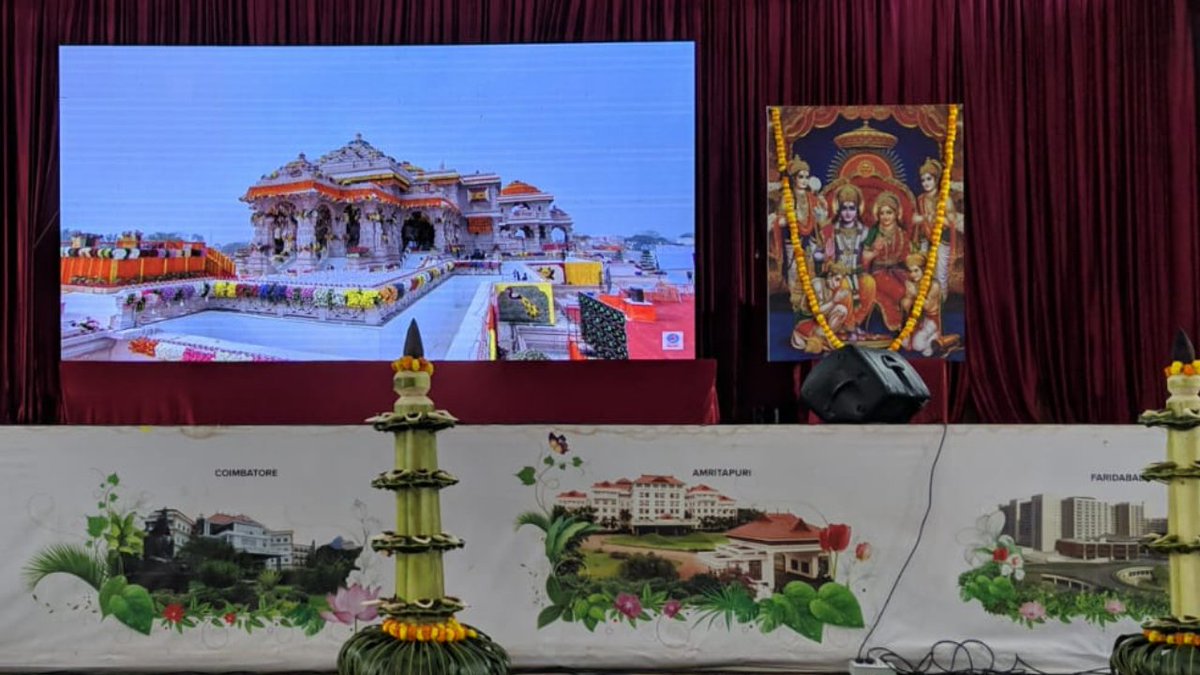
Indian Knowledge Systems | Heralding the Indic episteme.
Support by subscribing.
https://t.co/vUUuugQPvb
How to get URL link on X (Twitter) App


 Apart from the inviting aesthetic now imbued at her home's entrance, she is also feeding ants and sparrows - the smaller creatures present in her vicinity.
Apart from the inviting aesthetic now imbued at her home's entrance, she is also feeding ants and sparrows - the smaller creatures present in her vicinity. 



 Instead of history passing vertically down from ancestors to progeny, it spreads horizontally from peers on the internet.
Instead of history passing vertically down from ancestors to progeny, it spreads horizontally from peers on the internet.

 Arts aren’t simply the output of frolic and leisure; they are enablers of the creative faculties of the mind.
Arts aren’t simply the output of frolic and leisure; they are enablers of the creative faculties of the mind.
 When the Second World War passed without a whimper in India, he noted:
When the Second World War passed without a whimper in India, he noted:

 To begin, let us examine the concept of ‘history.’
To begin, let us examine the concept of ‘history.’ 

 1. Viksit Bharat: A vision is of great importance at this juncture, after the ‘planned’ cluelessness of decades.
1. Viksit Bharat: A vision is of great importance at this juncture, after the ‘planned’ cluelessness of decades. 
 The camp will enable children to navigate life with compassion, perspective, and resilience - through mix of classroom sessions, outdoor activities, and interactive learning grounded in our cultural ethos.
The camp will enable children to navigate life with compassion, perspective, and resilience - through mix of classroom sessions, outdoor activities, and interactive learning grounded in our cultural ethos.
 The first Rising of Śrī Rāma Cetanā came with His birth as an avatāra of Maryāda Puruṣottam.
The first Rising of Śrī Rāma Cetanā came with His birth as an avatāra of Maryāda Puruṣottam.

 However, life is infinitely rich and varied for such delusions to hold sway for long.
However, life is infinitely rich and varied for such delusions to hold sway for long.
 Śrī Aurobindo, a seer who saw with sublime clarity the role for India in forging a brilliant future for humanity. Inspiration that flows from his pen holds his work, which is a living throb and can guide us in our journey of self-fulfillment, as an individual and as a nation.
Śrī Aurobindo, a seer who saw with sublime clarity the role for India in forging a brilliant future for humanity. Inspiration that flows from his pen holds his work, which is a living throb and can guide us in our journey of self-fulfillment, as an individual and as a nation.



 Indra’s Net paints the world to be an infinite web spreading in all directions.
Indra’s Net paints the world to be an infinite web spreading in all directions.



 Not only did our ancestors possess history, they cared about it deeply.
Not only did our ancestors possess history, they cared about it deeply. 